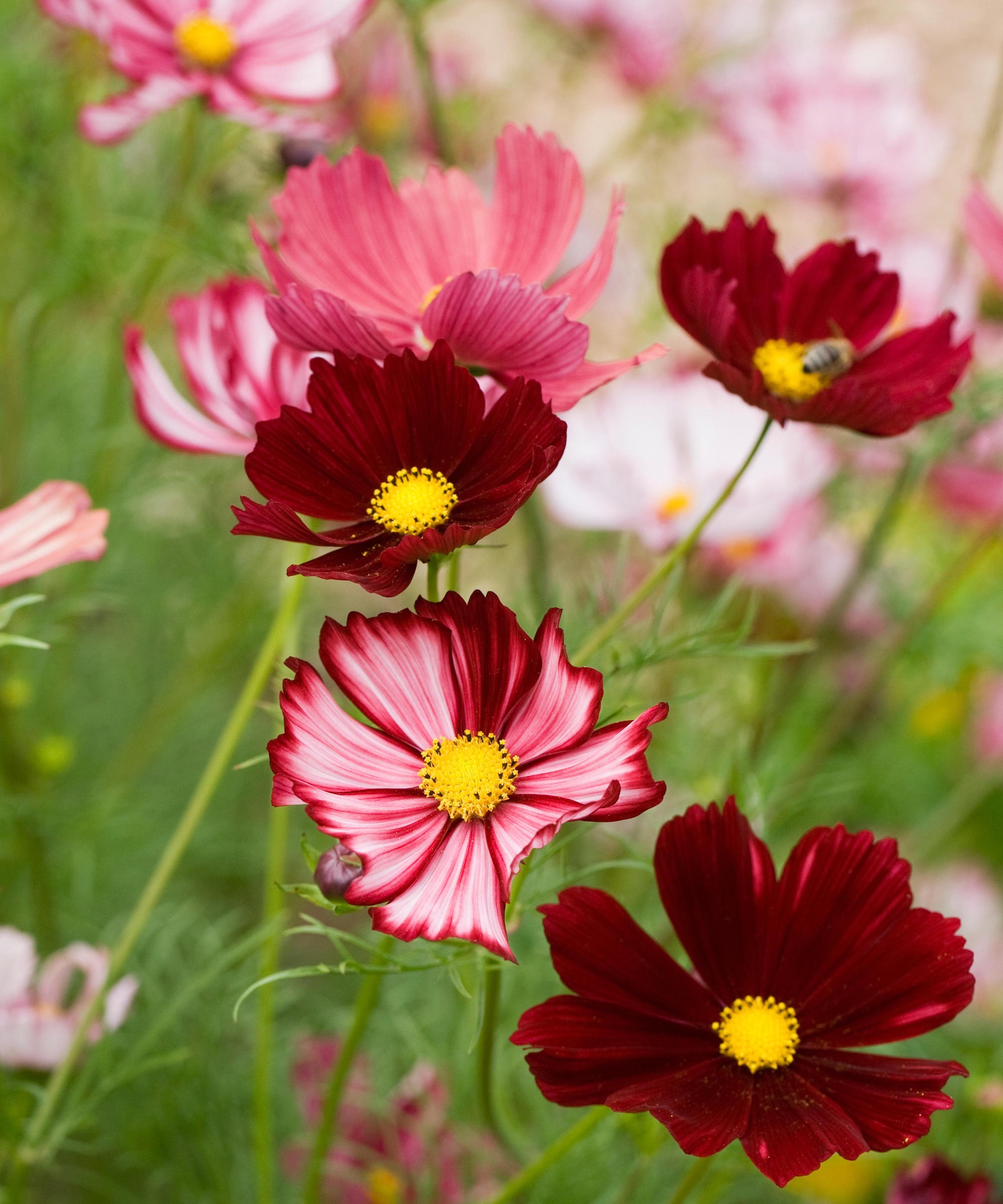I'm a professional gardener, and I have a growing trick to triple your cosmos flowers this summer – for bumper blooms without buying any more plants
This simple growing trick is guaranteed to give you more cosmos flowers


I’ve grown cosmos in many different settings and locations. In South Wales, where I worked for a private estate garden, I grew Cosmos bipinnatus 'Apricot Lemonade' in a vast border that enjoyed plenty of sunshine each day. Showy? Sure. But the pink-peach blooms, in my opinion, are impossible to beat, and I return to them year after year.
The secret to fuller, longer-lasting cosmos blooms? Pinching out. You’ve got to be cruel to be kind. When cosmos are just six to 10 inches tall, it can feel rather counterintuitive to chop them back slightly, but this one small act transforms them into compact, bushy, floriferous machines that will last all summer long.
And, within a week of pinching out, side shoots will appear, and by midsummer, plants will be fuller, stronger and smothered in blooms. So, if you want to learn how to keep cosmos blooming, don’t skip this simple step. Here’s everything I’ve learned about how to pinch out cosmos.
How to pinch out cosmos plants

Much like learning how to grow cosmos, pinching out is a quick, simple job, but the results are anything but modest.
So, when these fast-growing flowering annuals are around ten or so inches tall and have a few sets of true leaves, I look for the central growing stem, i.e., the tall, upright stem that is leading the pack.
Then, using clean, sharp snips (or even just my fingertips), I cut or snap just above a pair of leaves, removing the top growth.
Use something like these Fiskars deadheading snips, available from Amazon.
Design expertise in your inbox – from inspiring decorating ideas and beautiful celebrity homes to practical gardening advice and shopping round-ups.
Pinching out at this stage (or when the plant is slightly taller) triggers the plant to produce lateral branches, or side shoots, from just below the cut.
In time, these new side shoots will then go on to produce flower buds of their own, and the plant (in theory) should become bushier, stronger, and far more floriferous than if you’d left it to grow tall and leggy.
In the long run, your cosmos plants will produce many more flowers, all thanks to this simple but effective intervention.
And, while it is crucial in most settings, I find it is especially important for taller types of cosmos or those in exposed spots, as bushier growth means better structure and less flopping over.
Finally, once you are enjoying flowers, deadheading regularly is vital if you want to keep the show going until frost. Again, you can use snips or your fingers, but removing those browning petals will keep your plant producing more and more flowers... and who wouldn't want that?
Any faded flowers or stems snipped can be chucked on the compost heap, which will quickly decompose when combined with lots of plant material from your borders.
FAQs
What happens if I don’t pinch out cosmos plants?
Cosmos plants will still happily grow and flower if you do not pinch out. However, they tend to only produce flowers at the top of tall growth. In my experience, this means you get just a handful of blooms at the top of plants before they topple over, whereas if you pinch out, you should enjoy masses of blooms on compact, bushy specimens.
The pinching out trick is the same for many annuals, including dahlias and zinnias. A small bit of effort in spring and early summer will go a long way to keeping your plants in good shape. Our guides have all the information you need.
Shop your flower growing kits

Thomas is a Content Editor within the Gardens Team at Homes and Gardens. He has worked as a professional gardener for both public spaces and private estates, specializing in productive gardening, growing food and flowers. Trained in Horticulture at the Garden Museum, he has written on gardening and garden history for various publications, including The English Garden, Gardens Illustrated, Hortus, The London Gardener and Bloom. He has co-authored a Lonely Planet travel book, The Tree Atlas, due out in 2024.
You must confirm your public display name before commenting
Please logout and then login again, you will then be prompted to enter your display name.


